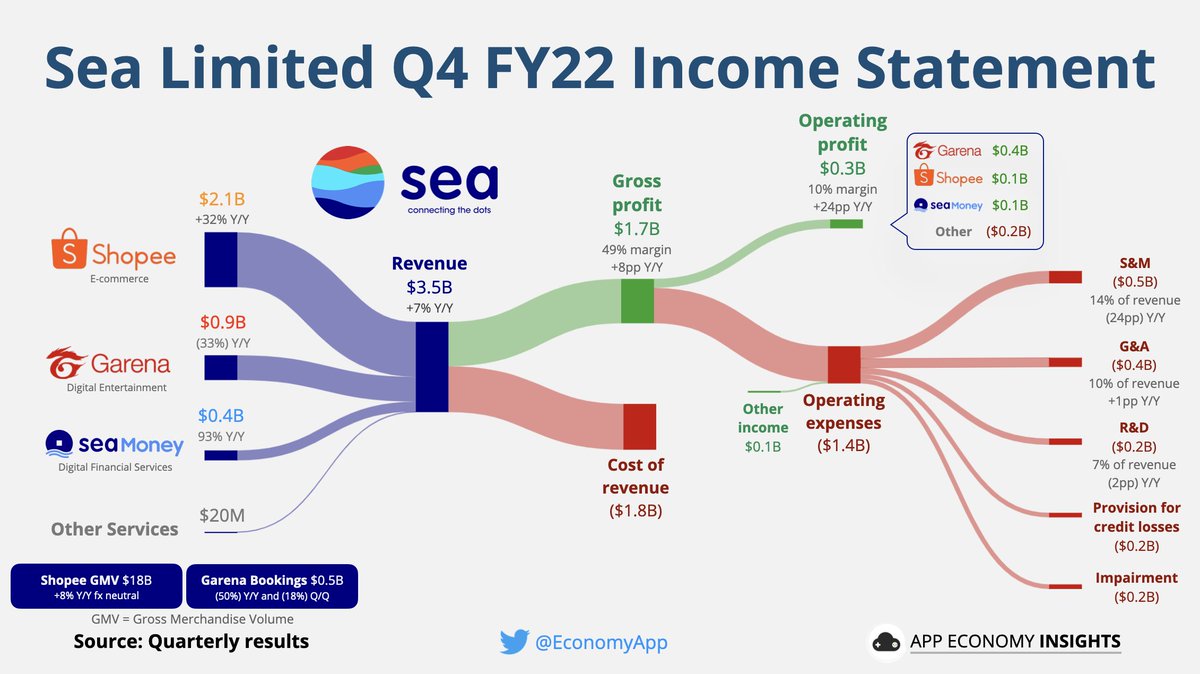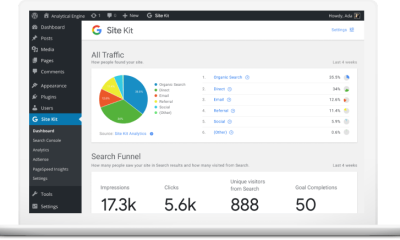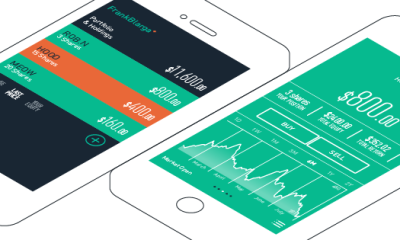Press Release
What Are Loans for Bad Credit?

Loans for bad credit online are actually quite different from regular loans, and it’s important to understand the difference before you apply for one. First of all, loans for bad credit are typically much more expensive. This is because the lender is taking on a higher risk by lending to someone with a poor credit history. As a result, you can expect to pay more in interest and fees than you would with a traditional loan.
Another thing to keep in mind is that loans for bad credit are not as easy to qualify for as regular loans. This is because the lender is looking for assurances that you will be able to repay the loan on time. However, if you are in urgent need of money and you have a bad credit history, a loan may be your best option.
In this respect, it’s important to understand what you’re getting into before you accept funding from installment loan brokers on this page. Be sure to research your options and compare interest rates and fees before you make a decision.
How Do Loans for Bad Credit Work?
loans
If you’re looking for a loan but have a less-than-perfect credit history, you may be wondering how loans for bad credit work. It can be tricky to get a loan with bad credit. Lenders typically charge higher interest rates and may require a cosigner or collateral. However, there are a number of loans available specifically for people with bad credit.
One option is a personal loan from a bank or credit union. Personal loans are unsecured, meaning you don’t have to put up any collateral. However, your interest rate may be higher than for a secured loan.
Another option is a secured loan, such as a car loan or a home equity loan. Secured loans are backed by collateral, such as your car or your home. This means that if you can’t make your payments, the lender can take the collateral to repay the loan.
There are also a number of lenders that offer bad credit loans online. These loans are typically unsecured and come with high interest rates. Make sure to research any lenders you’re considering to make sure you’re getting a good deal.
If you have bad credit, it’s important to shop around for the best loan. There are a number of loans available specifically for people with bad credit, so you don’t have to settle for a high interest rate or put your assets at risk.
How to Apply for a Loan With Bad Credit?’
Loan With Bad Credit
It can be difficult to get a loan if you have bad credit. However, there are still options available to you. Here are a few tips on how to apply for a loan with bad credit:
1. Check your credit score. Before you apply for any loans, it’s important to know your credit score. You can get a free credit score check at sites like Credit Karma. This will give you an idea of what lenders are likely to offer you.
2. Look for lenders that specialize in bad credit loans. There are lenders out there that specialize in bad credit loans. These lenders are more likely to approve your application, even if you have a low credit score.
3. Compare interest rates. It’s important to compare interest rates from different lenders on US Installment Loans before you decide which loan to apply for. That way, you can ensure you’re getting the best deal possible.
4. Apply for a loan online. Many lenders now offer online applications, which makes it easy to apply for a loan from the comfort of your own home.
5. Provide as much information as possible. When you apply for a loan, be sure to provide as much information as possible. This will help the lender approve your loan more quickly.
6. Be prepared to answer questions. When you apply for a loan, the lender will likely ask you a number of questions about your financial history. Be prepared to answer these questions honestly.
7. Boost your credit score. If you want to improve your credit score, there are a few things you can do. One is to make sure you’re paying your bills on time. Another is to avoid opening too many new lines of credit.
By following these tips, you can make it easier to get a loan with bad credit.
What Are the Benefits of Bad Credit Loans?
There are many benefits of bad credit loans. One of the biggest benefits is that they can help you improve your credit score. If you have bad credit, it can be difficult to get approved for a loan. A bad credit loan can help you rebuild your credit history.
Another benefit of securing a bad credit loan from US Installment Loans is that they can help you cover unexpected expenses. If you need money for a car repair or to pay your rent, a bad credit loan can help you get the money you need.
Another benefit is that they can help you get a car or a home. If you have bad credit, you may not be able to get approved for a car loan or a mortgage. A bad credit loan can help you get the money you need to buy a car or a home.
If you are considering a bad credit loan, be sure to do your research. There are many different lenders offering bad credit loans, so be sure to compare interest rates and terms.
Is it Safe to Apply for a Bad Credit Loan?
When you’re in a tough spot, it can be tempting to take out a loan from US Installment Loans to get you out of it. But is it safe to apply for a bad credit loan? As we mentioned before, bad credit loans are specifically designed for people with bad credit, so naturally they come with high interest rates and fees, which means they can be difficult to repay.
If you have bad credit, a bad credit loan may be your only option. But before you apply, be sure to read the terms and conditions carefully. Make sure you can afford the payments, and be sure to factor in the interest rate and fees.
If you can’t afford to repay the loan, you may end up in even more debt. So be sure to weigh your options carefully, as there may be other solutions that are a better fit for your situation.
Press Release
Russian processor manufacturers are prohibited from using ARM because of UK sanctions.

On Wednesday, the UK government expanded its list of sanctioned Russian organisations by 63. The two most significant chip manufacturers in Russia, Baikal Electronics and MCST (Moscow Center of SPARC Technologies), are among them.
Since the licensee, Arm Ltd., is situated in Cambridge, England, and must abide by the penalties, the two sanctioned firms will now be denied access to the ARM architecture.
contacting inactive entities
The UK government provided the following justification for the restrictive measures put in place against Baikal and MCST:
The clause’s goal is to persuade Russia to stop acting in a way that threatens Ukraine’s territorial integrity, sovereignty, or independence or that destabilises Ukraine.
The two companies are important to Russia’s ambitions to achieve technical independence since they are anticipated to step up and fill the gaps left by the absence of processors built by Western chip manufacturers like Intel and AMD.
The two currently available most cutting-edge processors are:
Eight ARM Cortex A57 cores running at 1.5 GHz and an ARM Mali-T628 GPU running at 750 MHz make up the 35 Watt Baikal BE-M1000 (28nm) processor.
MCST Elbrus-16S (28nm), a 16-core processor clocked at 2.0 GHz, is capable of 1.5 TFLOP calculations, which is a tenth of what an Xbox Series X can do. Baikal BE-S1000 (16nm), a 120 Watt processor featuring 48 ARM cores clocked at 2.0 GHz, MCST Elbrus-8C (28nm), a 70 Watt processor featuring eight cores clocked at 1.3 GHz,
Russian businesses and organisations that evaluated these chips in demanding applications claim that they fall short of industry standards and are even unacceptably priced.
Although the performance of these processors and the far poorer mid-tier and low-tier chips with the Baikal and MCST stickers is not very spectacular, they could keep some crucial components of the Russian IT sector operating amid shortages.
In reality, MCST recently bragged that it was “rushing to the rescue” of vital Russian enterprises and organisations, successfully filling the void left in the domestic market.
sanctions’ effects
Given that Russia has previously demonstrated its willingness to relax licencing requirements in order to mitigate the consequences of Western-imposed limitations, it is simple to discount the application and impact of the UK’s sanctions.
It is crucial to keep in mind that the Baikal and MCST processors are produced in foreign foundries, such as those owned by Samsung and TSMC, and that neither of them would violate Arm’s licencing policies or international law to serve Russian objectives.
The only option is to bring the production home and break the law as Baikal, which has a legitimate licence to produce at 16nm, only has a design licence for its next products.
The fact that chip fabrication in Russia can only now be done at the 90nm node level presents yet another significant issue. That was the same technology NVIDIA employed in 2006 for its GeForce 7000-series GPUs.
To combat this in April 2022, the Russian government has already approved an investment of 3.19 trillion rubles (38.2 billion USD), although increasing domestic production will take many years. In the best-case scenarios, 28nm circuits will be able to be produced by Russian foundries by 2030.
Press Release
Zuckerberg says Facebook is dealing with Spotify on a songs assimilation job codenamed Task Boombox (Salvador Rodriguez/CNBC).

Zuckerberg says Facebook is working with Spotify on a music integration project codenamed Project Boombox (Salvador Rodriguez/CNBC)
Salvador Rodriguez / CNBC:
Zuckerberg says Facebook is working with Spotify on a music integration project codenamed Project Boombox — – Facebook CEO Mark Zuckerberg on Monday announced that the company is building audio features where users can engage in real-time conversations with others.
Press Release
THE UNITIONS OF WEARABLE DEVICE SHIPMENTS FOR 2020 GREW 28.4% TO 444.7M UNITS, TEAHING FROM APPLE, WHICH GREW 27.2% IN Q4 AND HAS 36.2% MARKETSHARE, FOLLOWED BY XIAOMI AT *9% (IDC).

Wearable device shipments for 2020 grew 28.4% to 444.7M units globally, led by Apple which grew 27.2% in Q4 and has 36.2% marketshare, followed by Xiaomi at ~9% — Worldwide shipments of wearable devices reached 153.5 million in the fourth quarter of 2020 (4Q20), a year-over-year increase …
-

 Social Media10 months ago
Social Media10 months agoWho is Rouba Saadeh?
-

 Apps10 months ago
Apps10 months agoWhy is Everyone Talking About Hindi Keyboards?
-

 Social Media10 months ago
Social Media10 months agoMati Marroni Instagram Wiki (Model’s Age, Net Worth, Body Measurements, Marriage)
-

 Entertainment10 months ago
Entertainment10 months ago12 Online Streaming Sites that Serve as Best Alternatives to CouchTuner
-

 Apps10 months ago
Apps10 months agoThings you need to know about Marathi keyboard today
-

 Apps10 months ago
Apps10 months agoStuck with Your default Bangla keyboard? Isn’t it time for a change?
-

 Entertainment10 months ago
Entertainment10 months agoMovierulz Website: Movierulzz 2021 Latest Movies on Movierulz.com
-

 Social Media10 months ago
Social Media10 months agoBrooke Daniells: Everything About Catherine Bell’s Partner










